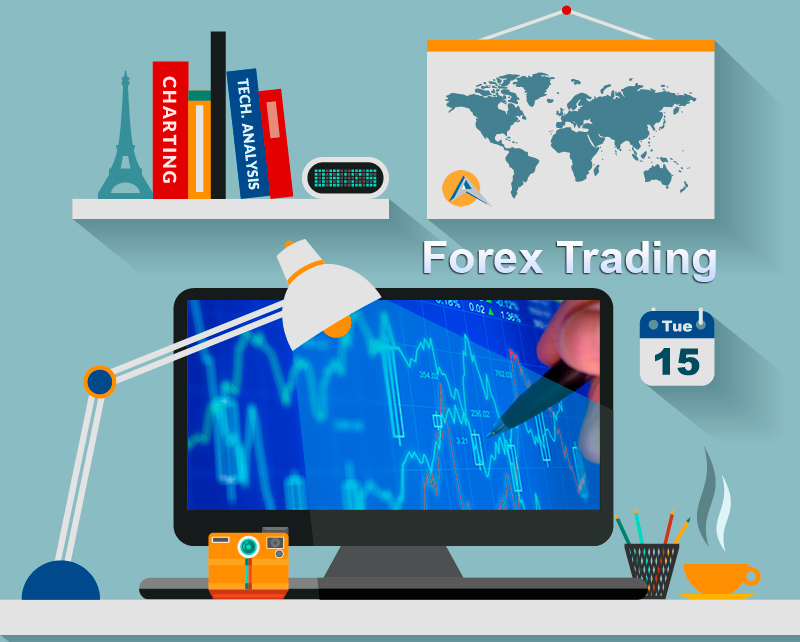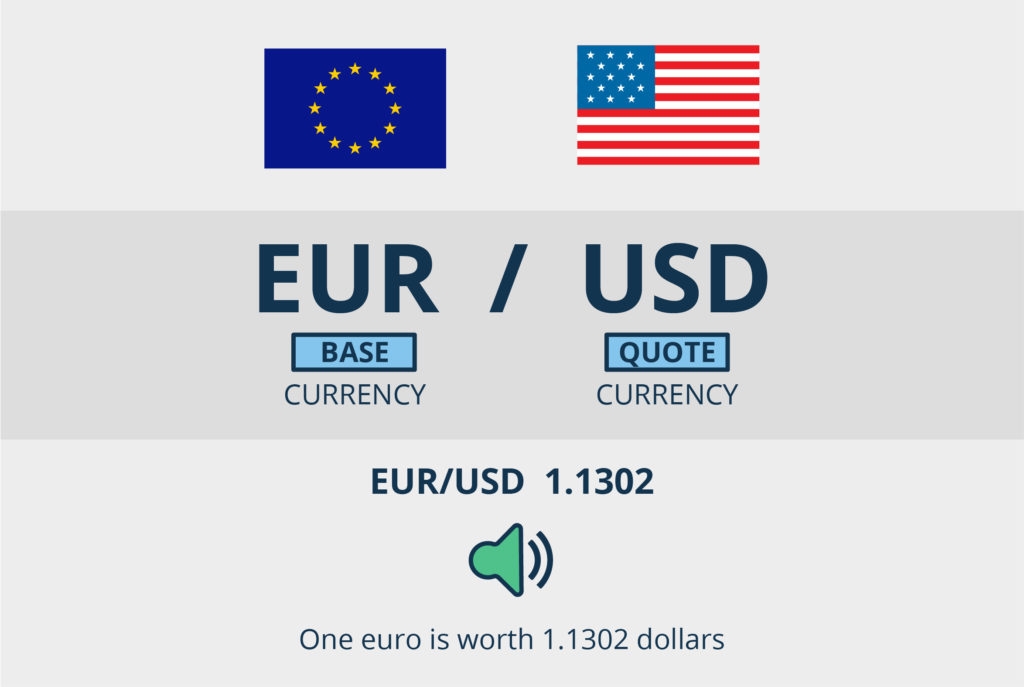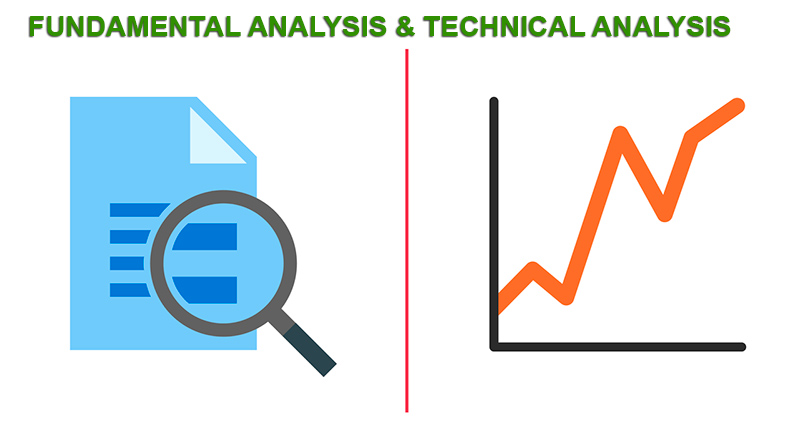What is Forex Trading?
 Forex (FX) is a fast-paced international market, which is primarily composed of major financial institutes such as centralized banks, hedgers and corporations. Even though these large players tend to dominate the market, still the rise in the demand of online forex trading platforms has led to an evolution of individual traders, where almost anyone who is willing to put some funds at risk and has access to an internet connection can become a participant of the market.
Forex (FX) is a fast-paced international market, which is primarily composed of major financial institutes such as centralized banks, hedgers and corporations. Even though these large players tend to dominate the market, still the rise in the demand of online forex trading platforms has led to an evolution of individual traders, where almost anyone who is willing to put some funds at risk and has access to an internet connection can become a participant of the market.
Today, forex remains to be the one of most traded markets across the globe, whose overall turnover value is estimated to be about 5 trillion per day (current trends predict that the value would double-up within a decade). An interesting aspect of this marketplace is that this is a decentralized market designed for currency exchange. It means the exchange of currencies occurs electronically, where all transactions can be performed through computer networks between traders and other participants, rather than a centralized medium of currency exchange.
How Does Forex Trading Work?

Forex is usually traded in pairs. When trading, the trader must speculate whether the price of their base currency will rise or fall against the selected counter currency. This is the reason why experts often emphasize on the pair of currency that you choose and the difference that it can create in your journey. Because there are several influences that affect the market and taking an account of each one of them can help you place the right trade. To know more about how exactly forex trading works, let’s take an example.
You know forex is a market of currencies, where one is always trying to overpower the other. Suppose, you pick USD/CAD, then the first currency i.e. USD will be the “base currency” while the second which is CAD is denoted as “quote currency”. Now, if it took about C$1.40 to buy US $1 then the pair USD/CAD equates to 1.4/1 or 1.4. Next, forex orders always come with a bid and ask price, same as seen in equity markets. The bid indicates a total price at which FX market is willing to buy base currency (USD as taken in example) in exchange of quote currency (CAD). Similarly, the ask price is considered to the value at which the market wants to sell base currency in exchange with quote currency.
Forex Currency Pairs

There are eight most traded currencies in the market namely: Euro (EUR), US Dollar (USD), the British Pound (GBP), the Canadian Dollar (CAD), Japanese Yen (JPY), New Zealand Dollar (NZD), Swiss Franc (CHF) and Australian Dollar (AUD).
As stated earlier, currencies are traded in pairs, where one currency is quoted against the other. These pairs are categorized into three different types which are:
- Majors: There are six major currency pairs that are actively traded in the market and are commonly seen in intraday trading session: EUR/USD (Euro), GBP/USD (Cable) USD/JPY (Gopher), USD/CHF (Swissie), USD/CAD (Loonie), AUD/USD (Aussie) and NZD/USD (Kiwi).
- Minors: Besides the most tradable currency pairs, there are other set of cross-pairs that are somehow strategically used in the market such as AUD/JYP, CHF/JYP, EUR/AUD, EUR/GBP, GBP/CAD and more.
- Exotics: These are the least traded currency pairs, where one major currency is paired with a new or developing economy, some of the common examples include USD/NOK, USD/ZAR, USD/SEK, USD/TRY, USD/DKK, USD/SGD, USD/HKD and many more.
The forex market stays open 24 hours for 5 days a week, where currencies get traded worldwide from the largest financial centers of New York, London, Frankfurt, Paris, Hong Kong, Sydney and Singapore. So, you can sell or buy the currencies through online forex platforms any time in those five days.
Role of Fundamental & Technical Analysis

Trading forex is a complex process, especially for beginners who have just made their way to the market and are not sure from where to begin. When you kickstart your journey as a trader, the first and perhaps the most important thing that you need to look after are analysis, as these form the backbone of forex trading. Forex analysis are divided into two types which are fundamental and technical analysis.
Fundamental Analysis
Fundamental analysis focuses on intrinsic value of currency exchange and its movement in accordance with economic conditions. There are a wide range of economic factors that can help you determine the movement of a currency, some of them are stated below.
- Retail Sales: This sales report is the measurement of total receipts given by the retail store across the country. It is used to determine the consumer spending index and the patterns that it follows. These are essential for predicting the performance of the economy thus assessing the direction in which it might move.
- Gross Domestic Product: The GDP by far is one of the strongest economic indicators that represent overall value of services and goods that are produced by the country in a span of a year. The figures analyzed through this are stated as lagging indicators, as traders do need to focus on two important reports published before the GDP rates are announced: the preliminary report and the advance report.
- Consumer Price Index: The consumer price index is meant to measure changes in the price of goods comprising over 250 categories. This report must be compared against the nation’s export as that will help you understand whether the country is able to make or lose money.
- Industrial Production: This report focuses on mines, utilities and factories that are present within the country. The report evaluates capacity utilization, which is the degree to which a particular industrial establishment is being used. This depicts production increase, stating whether it is near or maximum to the total capacity utilization.
Technical Analysis
Many traders believe that fundamental analysis is not enough to determine the future movement of market, as there are other elements like social, physiological and political influences that come into play. For this, they turn up to technical analysis. These analyses are derived from indicators such as graphs, charts and the patterns that they form and can be quite beneficial for successful intraday trading.
Key types of technical analysis are:
- Support and Resistance: The trading patterns are governed by demand and supply rate. The lines that form in between these are stated as the resistance and support level. The support level is perceived when the demand of currencies is quite strong, while resistance levels are just the opposite.
- Moving Averages: These are meant to analyses the future and past movement of prices. Some of the different types of MA are liner weighted moving averages, exponential moving averages and simple moving averages.
- Indicators and Oscillations: These calculate the momentum, volatility and money flow to offer a secondary measure against the actual movement of prices, allowing traders to confirm quality of the chart patterns and thus help them take their selling or buying decision confidently.
Conclusion
Forex is undoubtedly a lucrative marketplace, where combination of right approach, perfect strategy and ideal tools can help you make the most of each and every trade.